Editorial From the President

Author(s):
Mehrdad Hariri
Canadian Science Policy Centre
CEO and President
Disclaimer: The French version of this text has been auto-translated and has not been approved by the author.
Prime Minister Mark Carney’s 2025 mandate letter calls this moment “a generational test of our productivity, resilience, and unity”. Carney warns that “our longstanding weak productivity is straining government finances and threatening the sustainability of vital social programs”. And the Speech from the Throne adds urgency, describing it as “the largest transformation of the Canadian economy since the Second World War” and calling for “one Canadian economy” built on “one project, one review”. The message is unmistakable: national alignment is no longer optional, it is imperative.
Yet the road ahead is not easy. Geopolitical shifts, trade uncertainty with the United States, and deep structural challenges are testing Canada’s economic foundations. With 78 percent of international trade tied to the U.S. and 60 percent of exports still composed of raw or semi-processed materials, the path to greater resilience is steep. The cost of fragmentation is staggering: internal trade barriers alone drain up to 200 billion dollars a year. The Bank of Canada’s October report underscores these structural headwinds, trade, investment, and productive capacity all face mounting pressures.
More critically, this lack of national alignment undermines Canada’s ability to mobilize its full capacity around strategic missions, whether in energy, advanced manufacturing, AI and quantum technologies, biomanufacturing, or natural resources.
To address the enormous challenge ahead of us, bold vision is the key. Canada must align its policies, actors, and ambitions. That means a new vision: a mission-driven, pan-Canadian science and innovation strategy that aligns provinces and territories, integrates industrial and defence priorities, and positions innovation as the navigation tool for Canada’s place in the world.
What Canada needs now is not another program or fund, but a framework: a coherent national architecture that connects federal, provincial, industrial, and international priorities under one innovation strategy.
This vision rests on three core alignments:
- Aligning across jurisdictions: a true pan-Canadian innovation compact
The federal-provincial divide is one of Canada’s defining governance challenges. Yet innovation transcends borders. Canada needs a Federal-Provincial-Territorial Council on Science, Technology and Innovation, mandated to coordinate missions, harmonize policies, and track outcomes.
This council could potentially:
- Establish shared national missions, such as manufacturing, AI and quantum networks, or domestic supply chain resilience, co-funded across governments.
- Harmonize technology regulation, tax credits, IP-transfer rules, and R&D funding to eliminate misalignment and duplication.
- Create common data platforms on innovation outcomes, talent flows, and scale-up performance.
- Enable talent mobility through mutual recognition of tech and engineering credentials across provinces.
Aligning jurisdictions in this way would turn Canada’s diversity into strength: regional specialization connected through national missions, rather than isolated provincial programs.
- Integrating defence, industrial, and innovation policy
In today’s world, defence policy is part of the greater economic policy which also includes innovation.
The mandate letter calls for “a defence industrial policy that secures Canada, fulfils our responsibilities to allies, and helps build our economy”. That requires integration, beyond coordination on paper, towards a single strategic ecosystem. Defence procurement can serve as a catalyst for innovation. Just as NASA significantly supported the U.S. space industry and DARPA played a major and enabling role in the emergence of Silicon Valley, especially through defence technology funding, microelectronics and semiconductor research, and innovation networks that later spun off into the commercial technology industry. In the same way, UARC, a long-term research partnership consortium between universities and US government (mainly Department of Defence) supported sustained funding for research in universities.
Canada’s defence spending can anchor homegrown technology clusters. Setting a target, such as allocating 20 percent of defence expenditures to R&D and domestic innovation, would create the scale to guide research into globally competitive firms.
At the same time, industrial and innovation policy should be explicitly tied to sovereign capability: infrastructure in the North, advanced manufacturing, cyber security, AI and robotics, climate science and adaptation, and resilient supply chains. When defence, industrial, and innovation priorities align, they reinforce each other and create the feedback loop that generates both economic growth as well as serving our security needs.
This integration demands renewed federal, provincial, and territorial relationships that are much more coordinated and aligned, and also renewed coordination across federal departments, including ISED, DND, GAC and others. A National Strategy Secretariat could bring together Innovation, Defence, Industry, and Global Affairs departments under one framework, with shared missions and budgets. It would ensure that investments in R&D translate into industrial strength, export potential, and national security and resilience.
- Aligning innovation with international strategy
Canada’s global engagement must become an extension of its innovation agenda. Too often, foreign policy, trade, and innovation operate in silos. As global supply chains realign and technology becomes central to diplomacy and security, Canada must connect its innovation ecosystem to its international affairs.
That means:
- Using trade agreements to open innovation corridors and secure IP reciprocity.
- Aligning export financing and trade promotion with Canada’s innovation missions, so that EDC, GAC, and ISED are pursuing the same technology priorities.
- Positioning science and technology attachés in embassies to promote partnerships for Canadian firms and researchers.
- Using science, technology, and innovation partnerships as diplomatic tools to build trust and influence in critical regions and sectors.
In this sense, innovation becomes a navigation tool, a way for Canada to leverage its international prestige and influence for economic benefits along with our principles of democracy.
Canada’s challenges are significant, and a mission-driven innovation strategy that is aligned with our industrial, defence, and international affairs policies is part of the solution. It is this alignment which would make the “one Canadian economy” real. And that alignment must begin now, as Canada’s future competitiveness, sovereignty, and prosperity depend on that.

